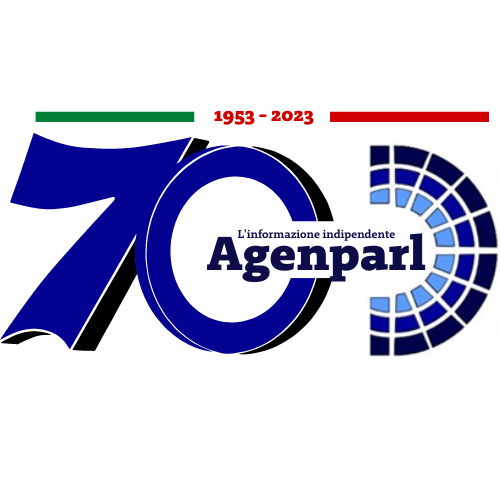 (AGENPARL) - Roma, 24 Agosto 2023
(AGENPARL) - Roma, 24 Agosto 2023(AGENPARL) – gio 24 agosto 2023 August 24, 2023
RELEASE 23-092
*NASA Shares First Images from US Pollution-Monitoring Instrument*
1_tempo_no2_1080p60.mp4
NASA’s TEMPO instrument measured concentrations of nitrogen dioxide pollution
over North America for the first time on August 2, 2023. The visualization
shows six scans made hourly between 11:12 a.m. and 5:37 p.m., with closeups
on the I-95 corridor in the US northeast, central and eastern Texas to New
Orleans, and the southwest from Los Angeles to Las Vegas. Areas of missing
data indicate cloud cover.
*/Credits: Kel Elkins, Trent Schindler, and Cindy Starr/NASA’s Scientific
Visualization Studio/*
On Thursday, NASA released the first data maps from its new instrument
launched to space earlier this year, which now is successfully transmitting
information about major air pollutants over North America. President Biden
and Vice President Harris believe that all people have a right to breathe
clean air. Data from the TEMPO mission will help decision makers across the
country achieve that goal and support the Biden Administration’s climate
agenda — the most robust climate agenda in history.
From its orbit 22,000 miles above the equator, NASA’s TEMPO, or
Tropospheric Emissions: Monitoring of Pollution, is the first space-based
instrument designed to continuously measure air quality above North America
with the resolution of a few square miles.
“Neighborhoods and communities across the country will benefit from
TEMPO’s game-changing data for decades to come,” said NASA Administrator
Bill Nelson. “This summer, millions of Americans felt firsthand the effect of
smoke from forest fires on our health. NASA and the Biden-Harris
Administration are committed to making it easier for everyday Americans
and decisionmakers to access and use TEMPO data to monitor and improve the
quality of the air we breathe, benefitting life here on Earth.”
{
imagePath: ‘/sites/all/libraries/beforeafter/js/’,
beforeLinkText: ‘Show only Left’,
afterLinkText: ‘Show only Right’,
}
)
DC/Philadelphia/New York
This pair of images shows nitrogen dioxide levels over the
DC/Philadelphia/New York region at 12:14 and 4:24 p.m. on August 2, as
measured by TEMPO.
*/Credits: Kel Elkins, Trent Schindler, and Cindy Starr/NASA’s Scientific
Visualization Studio/*
Observations by TEMPO will significantly improve studies of pollution caused
by rush-hour traffic, the movement of smoke and ash from forest fires and
volcanoes, and the effects of fertilizer application on farmland. In
addition, TEMPO data will help scientists evaluate the health impacts of
pollutants and aid in the creation of air pollution maps at the neighborhood
scale, improving understanding of disparities in air quality within a
community. Data will be shared with partner agencies that monitor and
forecast air quality, such as the Environmental Protection Agency and the
National Oceanic and Atmospheric Administration.
Launched in April aboard a Maxar Intelsat 40e satellite on a SpaceX Falcon 9
rocket, TEMPO [1] makes hourly daytime scans of the lower atmosphere over
North America from the Atlantic Ocean to Pacific coast and from roughly
Mexico City to central Canada. The primary instrument is an advanced
spectrometer that detects pollution normally hidden within reflected
sunlight.
The science mission is a collaboration between NASA and the Smithsonian
Astrophysical Observatory (SAO) in Cambridge, Massachusetts.
The first pollution maps released by NASA from the mission show
concentrations of nitrogen dioxide gas from pollution around cities and major
transportation arteries of North America. TEMPO measures sunlight reflected
and scattered off Earth’s surface, clouds, and atmosphere. Gases in the
atmosphere absorb the sunlight, and the resulting spectra are then used to
determine the concentrations of several gases in the air, including nitrogen
dioxide.
{
imagePath: ‘/sites/all/libraries/beforeafter/js/’,
beforeLinkText: ‘Show only Left’,
afterLinkText: ‘Show only Right’,
}
)
Southern California
This pair of images shows nitrogen dioxide levels over Southern California at
12:14 and 4:24 p.m. on August 2, as measured by TEMPO.
*/Credits: Kel Elkins, Trent Schindler, and Cindy Starr/NASA’s Scientific
Visualization Studio/*
The visualizations [2] show six scans made between 11:12 a.m. and 5:27 p.m.
EDT on Aug. 2. Closeup views focus on the southwestern U.S. from Los Angeles
to Las Vegas; from central and eastern Texas to New Orleans; and the
Interstate 95 corridor between New York and Washington. The data were
gathered during TEMPO’s “first light” period from July 31 to Aug. 2, when
mission controllers opened the spectrometer to look at the Sun and Earth and
start a variety of tests and solar calibrations.
“TEMPO is beginning to measure hourly daytime air pollution over greater
North America,” said Kelly Chance, SAO senior physicist and TEMPO principal
investigator. “It measures ozone, nitrogen dioxide, formaldehyde, aerosols,
water vapor, and several trace gases. There are already almost 50 science
studies being planned that are based around this new way to collect data.”
The TEMPO instrument was built by Ball Aerospace and integrated with the
Maxar-built Intelsat 40e. Since launch, teams from NASA, Ball Aerospace, and
SAO have been checking and calibrating the satellite’s systems and
components. The instrument will begin full operations in October, collecting
hourly daytime scans, the first instrument to observe pollution over North
America in this way.
“We are excited to see the initial data from the TEMPO instrument and that
the performance is as good as we could have imagined now that it is
operating in space,” said Kevin Daugherty, TEMPO project manager at
NASA’s Langley Research Center in Hampton, Virginia. “We look forward to
completing commissioning of the instrument and then starting science
research.”
TEMPO is part of NASA’s Earth Venture Instrument program, which includes
small, targeted science investigations designed to complement NASA’s larger
research missions. The instrument also forms part of a virtual constellation
of air pollution monitors for the Northern Hemisphere which also includes
South Korea’s Geostationary Environment Monitoring Spectrometer and ESA’s
(European Space Agency) Sentinel-4 satellite.
For more information on NASA’s Earth science research, visit:
*https://www.nasa.gov/earth* [3]
-end-
*Press Contacts*
Karen Fox/Katherine Rohloff
Headquarters, Washington
202-358-1100
Charles Hatfield
Langley Research Center, Hampton, Virginia
757-864-2509
NASA news releases and other information are available automatically by
text in the body is required).
To unsubscribe from the list, send an e-mail message
required).
[1] https://www.nasa.gov/press-release/nasa-s-high-resolution-air-quality-control-instrument-launches/
[2] https://svs.gsfc.nasa.gov/5142
[3] https://www.nasa.gov/earth
